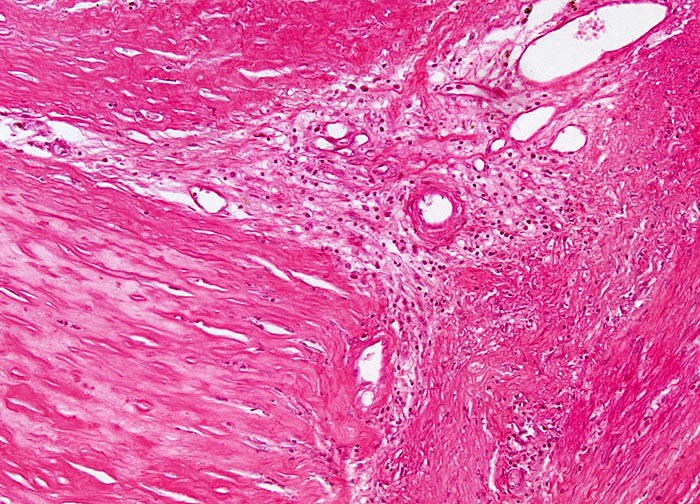
Coronary Atherosclerosis at 10x Magnification
The development of coronary atherosclerosis is a gradual process that usually begins in childhood and slowly progresses throughout life as an increasing amount of cholesterol, fatty substances, and other materials build up in the arteries, forming plaques. As plaques thicken, the flow of blood through the arteries is reduced, which can prevent enough oxygen from reaching the heart. Plaques are also problematic because they can rupture, which leads to the formation of blood clots. If these clots block the vessels of the heart, a heart attack ensues, but if they break away and clog a blood vessel that circulates blood to the brain, then the result is a stroke. Blood clots associated with plaques can also reduce the blood supply to other parts of the body, which can limit movement and eventually lead to gangrene.















